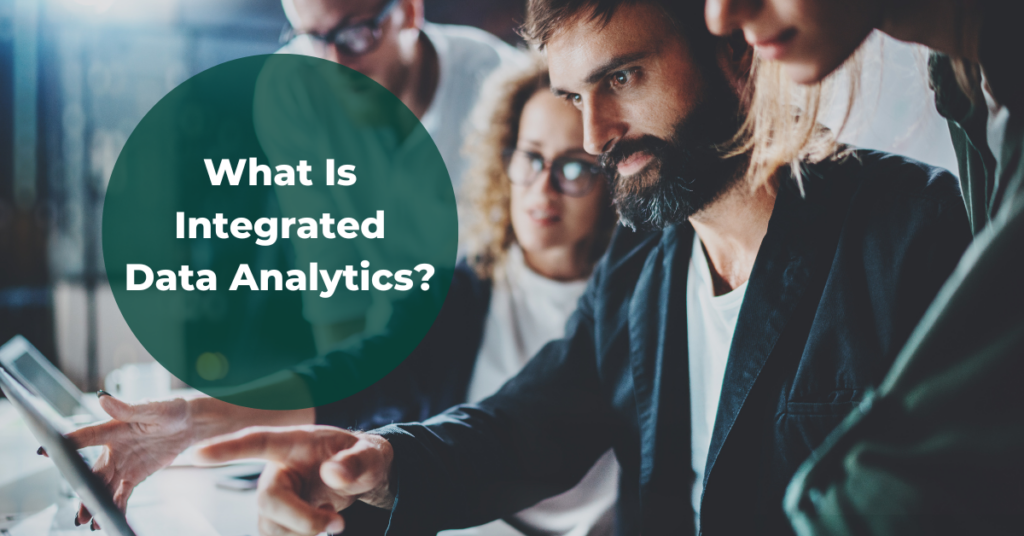
What is Integrated Data Analytics?
Understanding the nuances of data integration versus data ingestion is crucial for effective decision-making. Integrated data analytics has emerged as a powerful solution, offering a holistic approach to harnessing the full potential of data. In this blog, we’ll delve into the concept of integrated data analytics, exploring its advantages, examples, tools and methodologies.
Integrated data analytics is a comprehensive approach beyond traditional data handling methods. It involves combining data from various sources, ensuring seamless connectivity and interoperability. Unlike data ingestion, which focuses on collecting raw data, integrated data analytics emphasizes the synthesis and harmonization of disparate data sets. This approach enables organizations to derive meaningful insights and make informed decisions based on a unified view of their data ecosystem.
What are Data Integration Examples?
To illustrate the power of integrated data analytics, let’s explore real-world examples of successful data integration. From merging customer information across different platforms to consolidating sales data from various regions, consider a retail company that operates both online and in physical stores. The company utilizes data integration to merge customer information from various touchpoints, including online transactions, in-store purchases, and customer service interactions. By integrating this diverse data, the company creates a unified customer profile, enabling a seamless and personalized shopping experience. This consolidated view allows the retail company to analyze customer preferences, track inventory efficiently and optimize marketing strategies, ultimately enhancing customer satisfaction and driving business growth.
What are Data Integration Tools?
Data integration tools are software solutions designed to facilitate the seamless flow of data between different systems, applications and databases within an organization. These tools play a crucial role in automating the extraction, transformation, and loading (ETL) processes, ensuring data consistency and coherence. Popular data integration tools include:
- ConverSight: A unified decision intelligence platform with automated ETL for high-performance data loading. Highly scalable with support for real-time data streaming, transformation and governance
- Apache NiFi: A robust open-source tool for automating data flow between systems, supporting scalable data integration processes.
- Talend: An open-source integration platform that offers a suite of tools for data integration, transformation, and management.
- Informatica PowerCenter: A widely-used enterprise-grade ETL tool that enables organizations to integrate and manage data across various platforms.
What Best Defines Data Integration?
Data integration is the strategic process of combining, harmonizing, and unifying disparate data from diverse sources within an organization. It goes beyond the mere aggregation of information, focusing on creating a cohesive and consistent view of data across various systems. At its core, data integration aims to provide a seamless flow of information, ensuring that data is accurate, up-to-date, and easily accessible. This comprehensive approach enhances decision-making capabilities, facilitates efficient analysis and empowers organizations to extract maximum value from their data ecosystem.
What are the Four Types of Data Integration Methodologies?
Data integration methodologies are pivotal in shaping an organization’s data strategy and determining how disparate data sources are brought together, managed and utilized. Each methodology has its unique advantages and use cases, catering to different business needs and operational requirements. Let’s delve deeper into the four key types of data integration methodologies:
Batch Integration:
Batch integration involves the periodic updating of data in bulk. This methodology is particularly effective when dealing with large volumes of data that don’t require real-time processing. Organizations often use batch integration for tasks such as nightly data updates, ensuring that systems have the latest information at the beginning of each operational day.
Real-time Integration:
Real-time integration, on the other hand, enables immediate updates to data as they occur. This methodology is essential for industries and applications where up-to-the-minute information is crucial, such as financial transactions, online retail or monitoring critical systems. Real-time integration ensures that decision-makers have access to the most current data, enabling timely responses to rapidly changing conditions.
Data Warehousing:
Data warehousing involves storing integrated data in a centralized repository, commonly known as a data warehouse. This methodology focuses on creating a consolidated and organized storage solution that serves as a single source of truth for an organization. Data warehousing facilitates efficient querying and reporting, providing decision-makers with a unified and standardized view of the data.
Data Virtualization:
Data virtualization is a modern approach that provides a unified view of data without physically consolidating it into a central repository. Instead of storing data in one location, data virtualization enables organizations to access and analyze data from multiple sources in real-time. This methodology reduces the need for extensive data movement and duplication, allowing for agility and flexibility in data access.
Integrated data analytics emerges as a transformative force in the realm of data management. By understanding the distinctions between data integration and data ingestion, exploring real-world examples, examining tools and grasping the methodologies, organizations can harness the full potential of their data. Integrated data analytics is not just a technological shift; it’s a strategic imperative for businesses aiming to thrive in the data-driven era.
Request a demo to get an up-close look at Integrated Data Analytics in action.


